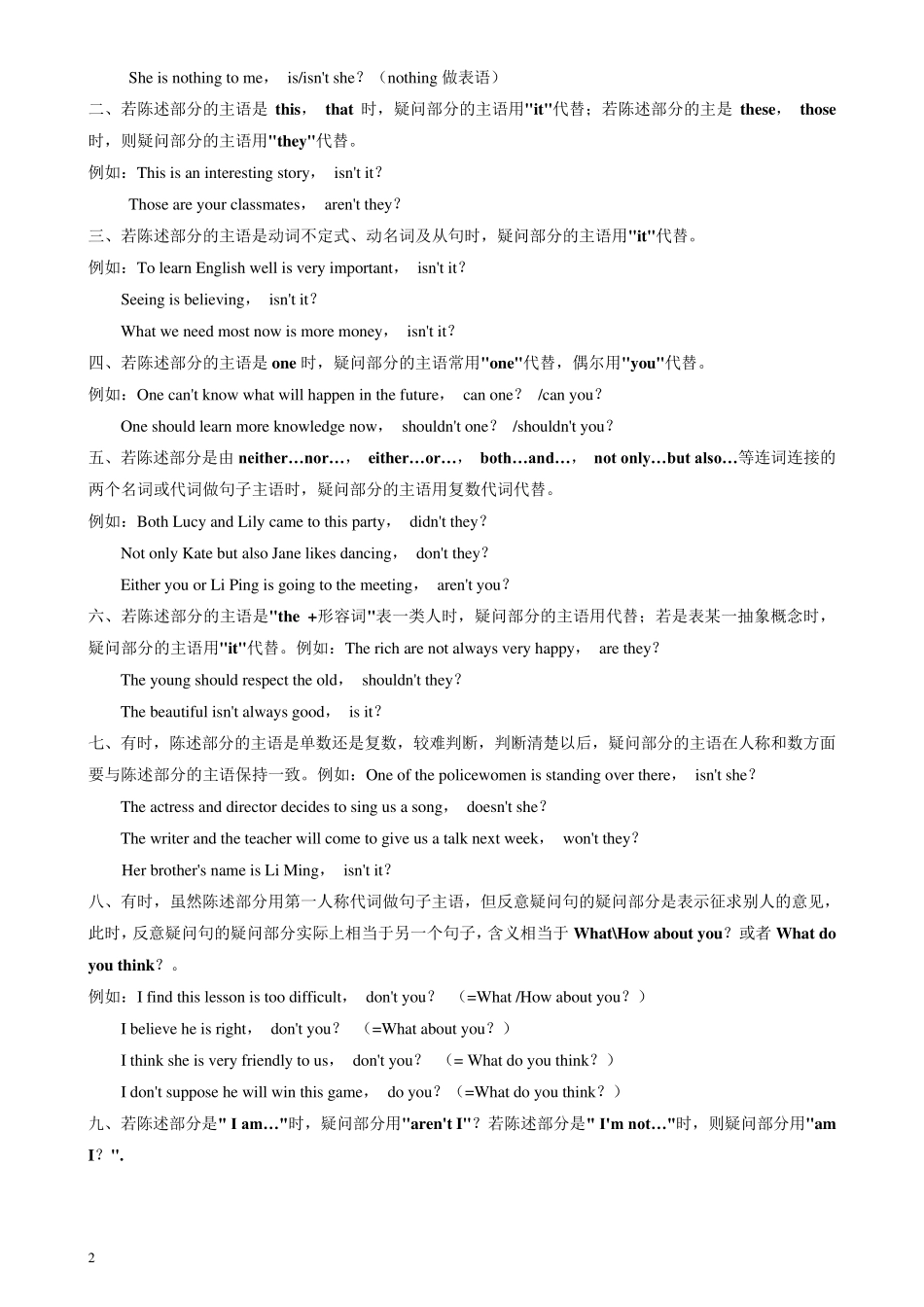1 反义疑问句用法总结 反义疑问句的形式:反意疑问句是附加在陈述句之后, 对所陈述内容提出质疑或通过反问以强化陈述内容的一种疑问句。 总体原则:如果陈述部分是肯定的, 附加部分用否定形式;如果陈述部分是否定的, 附加部分用肯定形式。附加部分的助动词和代词应与陈述部分一致。 反义疑问句具体用法总结如下: 首类:是“肯”还是“否”?(口诀:加词才算,自变不算) ● 若陈述部分含有否定意义的词如"no, never, seldom, hardly, none, few, little, rarely, scarcely, neither, neither…nor…,too…to…"等时,反意疑问句的疑问部分则用肯定形式。 例如:He has never been to Beijing, has he? There is little rain this year, is there? He is too young to look after himself, is he? She is seldom late for school, is she? 注 1:在"too… to… "句型中若用形容词"glad, pleased, ready, eager"等时,不适用这一原则, 因为此时并非表示"否定"含义,对于这点要特别注意。 例如:He is too eager to join the army,isn't he? She is too glad to receive a doctor's degree,isn't she? 注 2:若否定含义是通过使用前缀(如:un-,in-,im-,dis-,)和后缀(如-less,)等构成时,其反意疑问句的疑问部分仍用否定形式。 例如:You are unfair,aren't you? He dislikes these ways,doesn't he? 第一类:与陈述部分主语相关 一、如果陈述部分的主语是something, anything, nothing, everything 等不定代词代替“物”时,疑问部分的主语用"it"代替;如果陈述部分的主语是someone (somebody), anyone (anybody), no one(nobody),everyone (everybody)等不定代词代替“人”时,疑问部分的主语用"they"代替。例如:Everything goes very well, doesn't it? Something is wrong with that TV set, isn't it? Someone stole my watch, didn't they? Everyone went to the zoo last Sunday, didn't they? Nobody is late for school, are they? 注:nothing 在陈述部分中若做主语时,疑问部分用肯定形式,若做宾语或表语时,疑问部分用肯定形式或否定形式均可。例如:Nothing happens, does it? (nothing 做主语) The...


